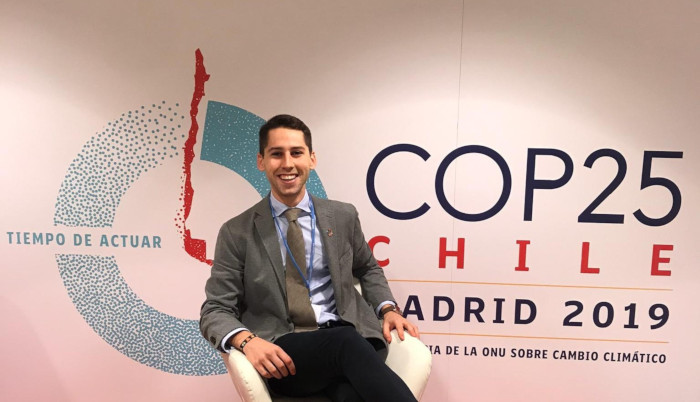-
05 December 2019
Category : Opinion
Europe and Latin America, together against climate change
Iosu Iribarren, from the FIIAPP Strategy Department, gives us his personal vision of COP25 and how to face the challenge of climate change
 Iosu Iribarren, from the FIIAPP Strategy Department, gives us his personal vision of COP25 and how to face the challenge of climate change
Iosu Iribarren, from the FIIAPP Strategy Department, gives us his personal vision of COP25 and how to face the challenge of climate change31 October. The phones keep ringing. And in silence the ticking of the clock reminds us that it’s time to act . There are four weeks left before COP25 begins. It will be in Madrid, there is hardly any time, and an invigorating mixture of excitement, confidence and nerves takes hold of us all.
Chile has rightly decided to attend to the social demands, which cannot wait. And since the fight against climate change is also pressing, solidarity triumphs in the form of cooperation and multilateralism.
COP25 is the last summit before the Paris Agreement comes into force in 2020. The United States has already announced that it is abandoning ship and Greta Thunberg, in such an eloquent paradox, shows us her sailing boat trip to the Summit in streaming video. Meanwhile, the European Union, Latin America and the other countries (a total of 196) stand firm in their commitment to complete Article 6 – still under construction – to create a common framework for offsetting CO2 emissions.
On the horizon are the contours of a future with zero-net carbon and a fair global energy transition. The 2030 Agenda permeates the atmosphere, marks the way forward and offers us a common language with which to promote – from Ibero-America, that has not changed – sustainable development in all its dimensions.
The two-week period from 2 to 13 December is the ideal occasion for exchanging perspectives and sharing the challenges, difficulties and solutions that together we are finding in adapting to and mitigating climate change. Political dialogue and policy dialogue: thus, COP25 will be a platform to give voice to Latin America and its adaptation agenda.
The oceans are the protagonists of this Summit, following the latest IPCC report . And it is in this context that the Atlantic Ocean is presented as a bridge for two continents united in the face of climate change challenges. The pavilion of the Chilean presidency is joined by that of Colombia (it is the first time that the country has a pavilion in a Climate Conference), Spain, the European Union and EUROCLIMA + to tell the rest of the world about our efforts on climate cooperation.
Mexico passed its first climate change law in 2012 and amended it in 2018, at the same time as Peru passed its own law. Chile and Spain are each in the process of approving bills and, in Panama, the design of their climate law has just begun. Cuba, for its part, now addresses the increasing inclusion of renewable energies within its energy matrix.
Similar or different experiences? We’ll find out as COP25 progresses! What is clear is that we cannot avoid designing, implementing and evaluating public policies with the reduction of inequalities and the search for a prosperous life for all at their centre, for an inclusive and sustainable future, based on a commitment to the environment.
Sunday 1 December. Everything is ready for the Summit. The phones stopped ringing and the clock hands can be heard again. The next dates – 2020, 2030, 2050 – are close. But the rhythm is no longer marked only by the ticking of the clock; since 2 December the voices of Latin America and Europe, which have found each other more than ever at COP25, have been added.
To Alma and Carolina, and to the team of the High Commissioner for the 2030 Agenda, thank you for your optimism and your contagious enthusiasm.
The views and opinions expressed in this blog are the sole responsibility of the person who write them.






